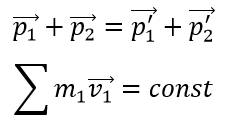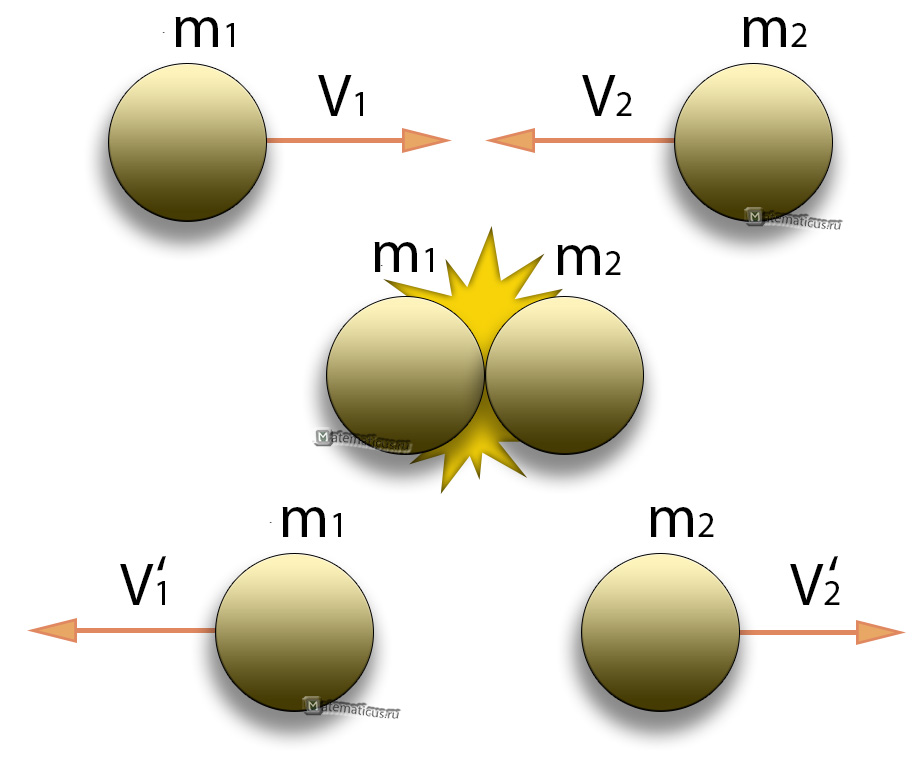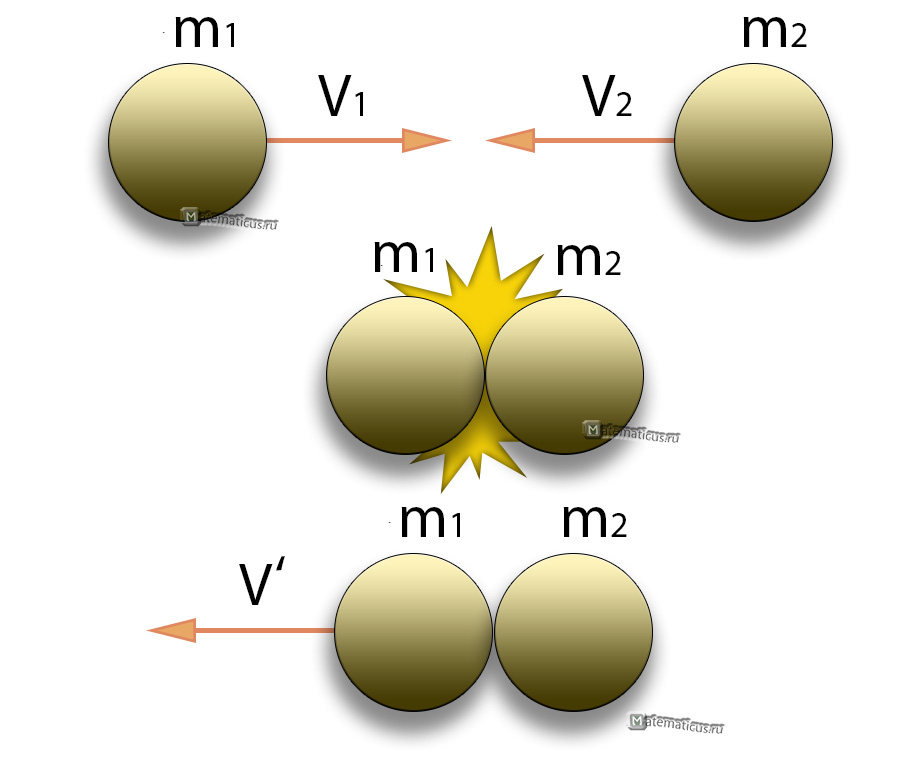Momentum is a vector quantity (denoted $\overrightarrow{p}$) equal to the product of mass at speed and is defined by the formula:![]()
Law of conservation of momentum in a closed system (there are no external forces) the vector sum of the pulses before the collision is equal to the vector sum of the pulses after the collision.

$\overrightarrow{p_1}$, $\overrightarrow{p_2}$ – initial pulses of bodies before interaction of bodies, kg·m / s;
$\overrightarrow{p_1^ {}}$, $\overrightarrow{p_2^ {}}$ — impulses of bodies after interaction of bodies, kg·m/s.
Elastic collision of bodies (for example, balls)

Formula for elastic collision of bodies:
![]()
m1 – mass of first body, kg;
m2 – mass of second body, kg;
$\overrightarrow{v_1}$ is the velocity of first body before impact, m/s;
$\overrightarrow{v_2}$ is the velocity of second body before impact, m/s;
$\overrightarrow{v_1^{}}$ – the velocity of first body after collision, m/s;
$\overrightarrow{v_2^{}}$ – the velocity of second body after the collision, m/s.
Inelastic collision of bodies (for example, balls)

Formula for inelastic collision of bodies:
![]()
$\overrightarrow{v^{}}$ – the speed of bodies after a collision, m/s.
Examples of applying the laws of conservation of momentum are the collision of balls, cars, recoil when shooting, jet movement, etc.
